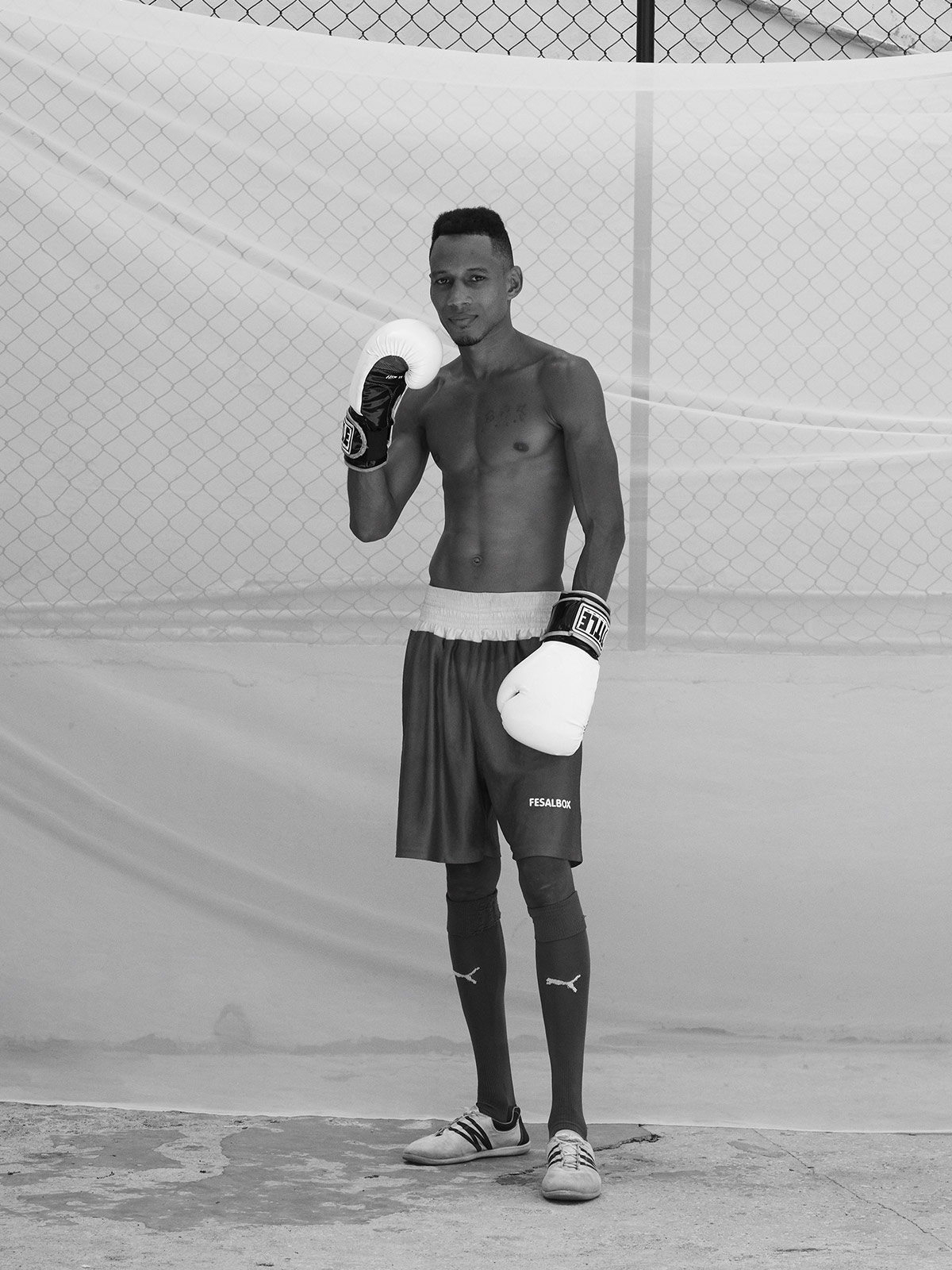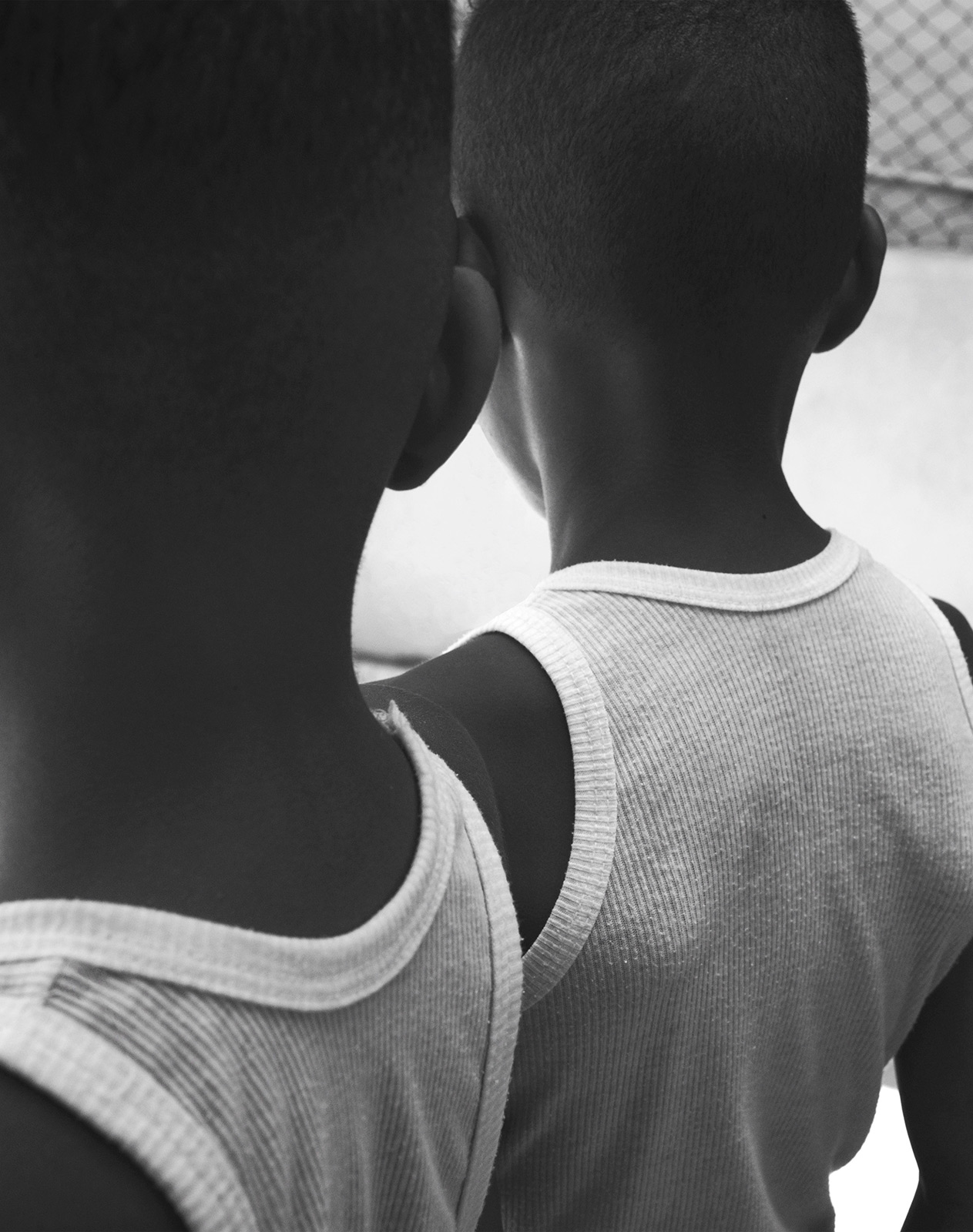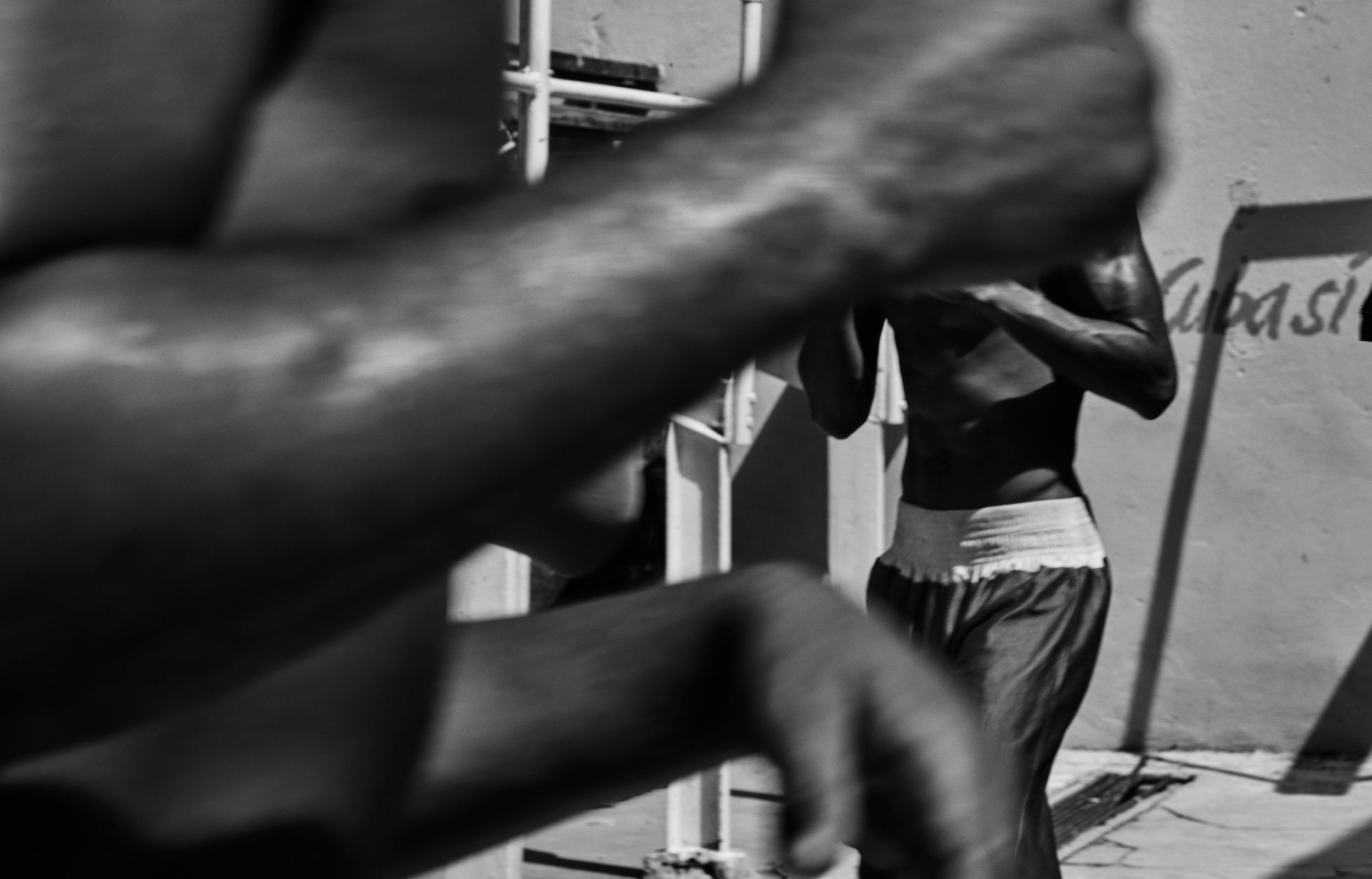With his new photo journal ‘Boxing in Havana,’ Dominick Sheldon celebrates Cuba's rich sporting history, and the community that forms around it.
Since it became possible for US citizens to travel to Cuba, under the broad objective of “Support for the Cuban People,” the capital city of Havana has landed on endless clickbait-style lists of Instagrammable Places You Can’t Miss and Vibrant Spots to Spice Up Your Feed. Photographer Dominick Sheldon offers a more honest perspective on Cuban culture, community, and infrastructure. His second photo journal, Boxing in Havana, celebrates an integral part of Cuba’s rich sporting history, and the community that forms around a shared activity. The mostly black-and-white photos include regal portraits of young fighters posing in second-hand basketball shorts, older teenagers with beads of sweat running over sun-faded tattoos, and candid shots of younger siblings playing outside. The pages are interspersed with unvarnished, atmospheric scenes of Havana’s street life and infrastructure.
“I had travelled previously to Cuba over a decade ago and was looking to go back and engage a little more with the culture,” explains the New York-based photographer, who was welcomed into the fighter’s homes. “As an outsider it helps me to be accepted by individuals when they are engaging in a subject on their terms.” Sheldon typically looks for local populaces that share a common lifestyle—his first journal, Essaouira, explores carefree youth and exercise rituals on the Moroccan beach it’s named for. But the young men he photographed in Havana aren’t just killing time and letting off steam. They’re protégés of Olympic trainer Alberto Gonzalez Caturla. “The boxing gym operates as a training facility for the local community,” Sheldon explains. “The gym is free to the children and teenagers in the surrounding area and has been responsible for producing some of the leading Cuban Olympic boxers over the last decade.”
Sheldon hopes his photography can inspire other people to engage with communities outside of their own, championing a singular experience over a single point of view. “These journals are about engagement and interaction with individuals who, by nature of the travel and environment, come from different backgrounds and have different upbringings,” he says. “I started to produce these to create a conversation between myself and others and inspire other people to want to do the same thing. The interactions inspire hope, excitement, and faith in the human connection.”
Journal II: Boxing in Havana is presented in a limited-edition run of 350 journals. Each copy is housed in a foil-stamped vinyl sleeve, signed, and numbered. The journal is available to purchase at Yvon Lambert in Paris and SO BOOKS in Japan.

















